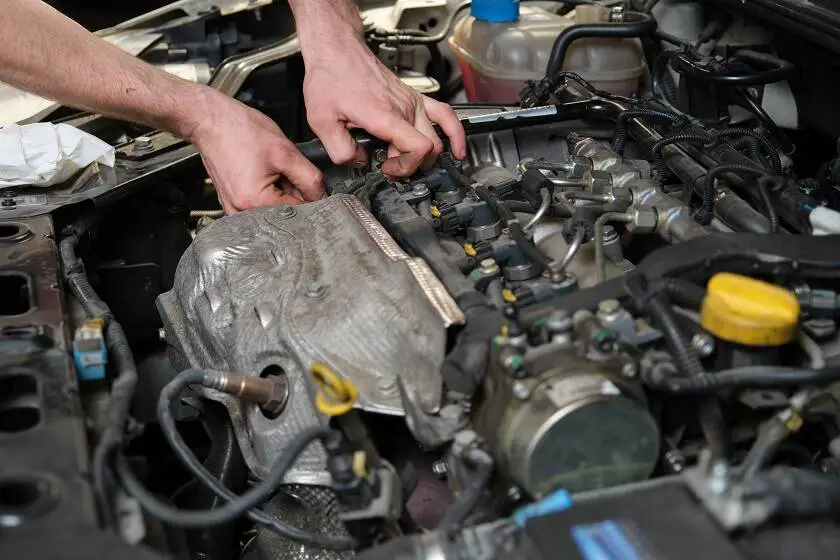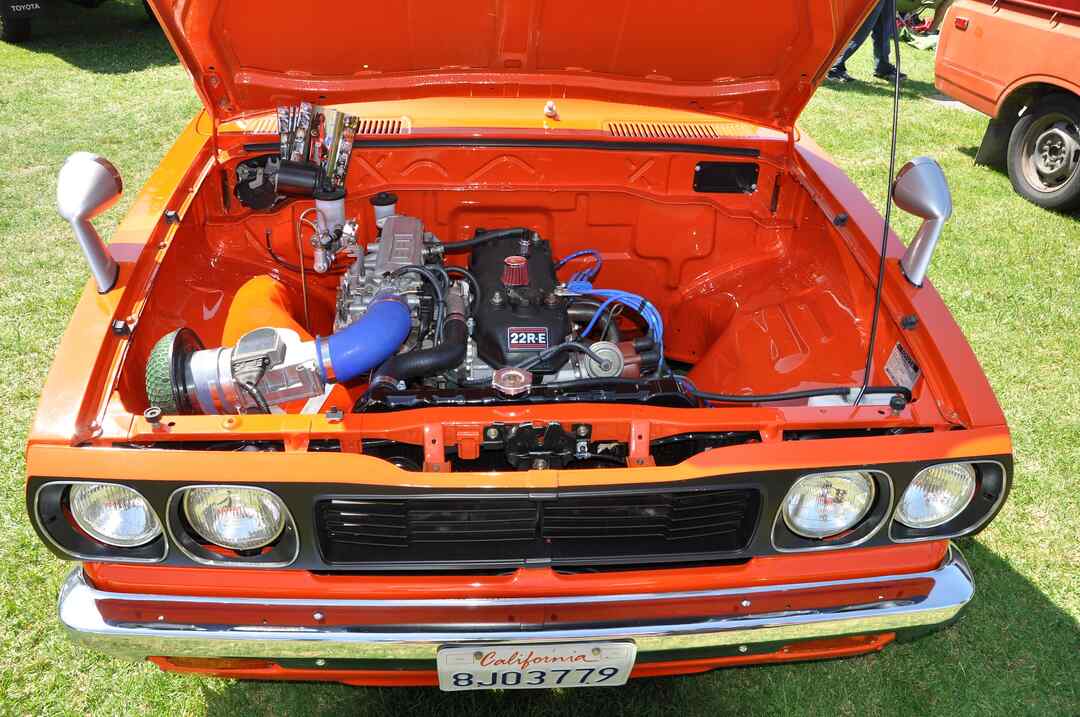The engine control system receives critical information from the camshaft position sensor. The ECU receives data about the positioning of the crankshaft and camshaft. Injection sites and estimating ignition are made easier using this positional data. Near the notched ring of the camshaft, the bulk of the camshaft sensors is situated. Injector pulse and spark timing can be adjusted with these data’s help.
When you press the accelerator, a contemporary engine’s camshaft position sensor detects which cylinder is in its power stroke in relation to the crankshaft position. This sensor then supplies gasoline and a spark to ignite the engine. A tiny but crucial magnetic device is called a camshaft position sensor.
Camshaft Position Sensor Types
The three main types of camshaft position sensors are mentioned below:
- Hall Effect Camshaft Position Sensor
- Magnetic Camshaft Position Sensor
- Variable Reluctance Camshaft Position Sensor
Hall Effect Camshaft Position Sensor
This kind is comparable to inductive sensors in that it reacts to the exact notches and is placed in the same places. Instead of producing an analog AC signal, it makes a digital signal. The sensor turns off or on as the notches pass by it.
Magnetic Camshaft Position Sensor
This produces a sine wave signal of alternating current (AC) and voltage on its own. Either the camshaft or the distributor may contain it.
because it is close to the camshaft, which is equipped with a permanent magnet. The magnet’s magnetic field is produced each time it passes past the sensor, and the resulting pulse is transferred to the ECM for processing.
Variable Reluctance Camshaft Position Sensor
Similar to a solenoid or DC motor, variable reluctance (VR) sensors, commonly referred to as mag (magnetic) sensors, are constructed with a wire looped around a permanent magnet. They have two leads a signal lead and a ground lead and are passive, not requiring any external power.
Camshaft Position Sensor Location
Near the cylinder head, the sensor is situated. The camshaft and timing rotor is simple to read from this position. The signal is decoded by the electronic control unit (ECU) at the angle of the camshaft. The signal supplied by this sensor will be used to decide whether or not the cylinder will be recognized.
In today’s auto start-stop engine technology, this sensor examines the cylinder’s expansion stroke. You are warned if a camshaft sensor is damaged before it stops working. Simply remove the engine cover for the specific engine in question to observe that it is situated directly on the engine’s backside for convenience and ease of use. Close to the output shaft of the transmission is where a speed sensor is located.
Camshaft Position Sensor Function
The functions of the camshaft position sensor are mentioned below:
Sensing
If you look carefully, there is a strong magnet next to the crankshaft. Steel pins or pegs that are spaced regularly all around the crankshaft can also be seen. This magnet continuously produces a magnetic field. The steel pins that surround the crankshaft spin around this field as the engine fires up. An alternating current signal is generated as a consequence of the change in the field.
Additionally, this tells the engine management system “engine computer” how fast to rotate the engine. As an outcome, the EMU can determine the location and speed of the camshaft to enhance ignition and fuel injection.
Adjustments
Think about the situations where you are operating at full speed. The crankshaft’s rotational speed will be continuously monitored by the computer, compared to the desired range, and speed adjustments will be made as necessary. This adjustment may involve both an increase and a decrease in speed. In essence, a dual air brake system is two braking circuits or systems merged into one.
Camshaft Position Sensor Symptoms
The camshaft position sensor may malfunction as a result of overuse or an accident. Before the engine completely shuts down and your camshaft position sensor is completely failed, there are a few warning signs that appear, and it needs to be replaced right away.
Starting Difficulties
The most typical sign of a broken or malfunctioning crankshaft position sensor is difficulty starting the car. When starting an engine, the crankshaft position sensor monitors information such as the crankshaft’s position, speed, and other critical factors. In case the crankshaft position sensor is not working properly, the automobile can start intermittently or not at all.
Illuminated Check Engine Light
The check engine light on a car will typically come on if the camshaft position sensor is malfunctioning. This takes place when a vehicle’s PCM logs one or even more timing-related DTCs. Every car has an OBS system that effectively monitors the car’s hardware and software. It can see deterioration in a component before it entirely fails, causing undetectable performance changes. Additionally, a scan will be performed to gather a number of error codes, which will let them know the actual issue.
Low Fuel Efficiency
A malfunctioning camshaft position sensor can overly leave the fuel injectors open, allowing more fuel to enter the combustion chamber. The engine won’t function as effectively as it should because of this inaccurate information provided by the camshaft position sensor. If this keeps happening, the engine can start to knock and get seriously damaged.
Stalling
Another frequent sign of a broken crankshaft position sensor is intermittent stalling. The crankshaft signal may be interrupted while the engine is running if there is an issue with the crankshaft position sensor or even its wiring, which will cause the engine to stall. This frequently points to a wiring problem. This symptom may be brought on by a crankshaft position sensor that isn’t working properly.
Uneven Acceleration
Your car won’t accelerate very rapidly if your camshaft sensor begins to malfunction. Sometimes, if you’re fortunate, you can travel at a top speed of 30 mph. Even when the timing is off by just a few milliseconds, improper fuel supply and ignite result in poor acceleration. Additionally, it will make your car stutter, move at a low pace, lack power, stall, or even come to a complete stop.
Erratic Idle or Vibrating
When at a red light or somewhere else, you might hear the motor groaning or trembling. This results in vibrations that lower overall engine performance because the sensor isn’t keeping track of the crankshaft’s location. The vibration may also interfere with the engine’s ability to track its mileage. A mechanic should analyze any strange vibrations as soon as feasible.
Engine Misfire
A malfunctioning crankshaft position sensor may cause misfiring cylinders, which may cause an engine to stutter. Cylinder misfiring occurs whenever the crankshaft position sensor malfunctions because it is unable to provide precise information about the positioning of the pistons in the engine. Although poor spark plug timing is a possibility, the crankshaft sensor is much more likely to be the problem if the spark plugs are fine.
A Decrease In Gas Mileage
If somehow the crankshaft position sensor fails to provide accurate timing data, fuel injectors will not correctly pump fuel into the engine. The engine will consume more fuel than is necessary during both short and long journeys, reducing total fuel efficiency.
Camshaft Position Sensor Replacement
For most cars, replacing the camshaft position sensor will cost between $200 and $400. However, some vehicles may have a cheaper price. The replacement of the camshaft position sensor requires a few steps, which are listed following.
- You must first cut the negative battery cable.
- You must now find the sensor. It likely has a connector with two to three wires attached.
- In order to detach the sensor’s cables, you must release the tab on the sensor.
- Remove the mounting bolt holding the sensor to the engine as soon as possible.
- The damaged sensor can be removed by giving it a small twist.
- You must put some engine oil on the sensor’s O-ring before mounting a replacement sensor.
- Utilizing the mounting bolts, install the new camshaft position sensor
- Reconnect the sensor’s wire connector in the proper manner.
- Finally, reattach the battery’s negative terminal.
- After that, test the camshaft position sensor by driving the vehicle.
Conclusion
When an engine has variable valve timing, it is extremely important to monitor the piston-valve interaction using a crank sensor in connection with a camshaft sensor. In order for the management system to know when to inject fuel, this method is also used to synchronize a four-stroke engine whenever it initially begins. That wraps up this article’s discussion of the definition, purposes, elements, and diagrams, as well as the various types, processes, and signs of a faulty crankshaft position sensor.
FAQs
What will happen if camshaft sensor goes out?
Camshaft position sensor starts to slow down data transmission. If the ignition timing and fuel supply are off by a few milliseconds, your automobile will stall, sputter, accelerate slowly, lose power, and even shut altogether.
How much does it cost to replace a camshaft position sensor?
If diagnosed correctly, replacing a camshaft sensor is not a pricey task. Standard automobiles cost between $200 and $400.
Can a car run without a camshaft position sensor?
The most crucial engine management sensor is the crankshaft position sensor; without it, the engine cannot function.
What happens when your transmission speed sensor goes out?
Since the engine control module won’t be able to properly operate the gearshifts without a speed signal from the sensors, this will present a problem. The transmission won’t operate correctly as a result.




